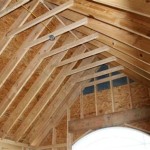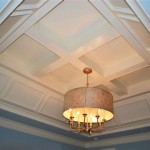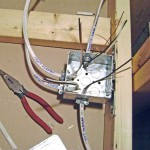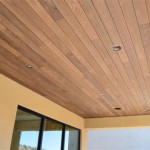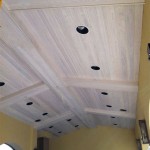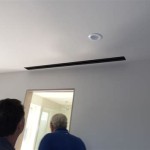How To Hang Up Vines On Ceiling
Adding trailing greenery to a ceiling can dramatically enhance a space, bringing a touch of nature indoors. Whether using faux vines for a low-maintenance solution or incorporating real climbing plants, careful planning and appropriate techniques ensure a secure and visually appealing display. This article provides a comprehensive guide to hanging vines from the ceiling, covering material selection, installation methods, and considerations for plant care.
Choosing the Right Vines
Selecting appropriate vines depends on whether real or artificial plants are preferred. For artificial vines, consider the material's quality, texture, and color to ensure a realistic appearance. High-quality faux vines often feature variations in leaf size and color, mimicking natural growth patterns. When choosing real plants, consider the space's lighting conditions, humidity levels, and the plant's growth habits. Vining plants that tolerate lower light conditions, such as Pothos or Philodendron, are generally good choices for indoor environments. Researching the specific needs of the chosen plant is crucial for its long-term health and successful growth.
Preparing the Ceiling and Vines
Before installation, the ceiling must be thoroughly cleaned to remove dust and debris. This ensures proper adhesion for hooks, clips, or other fastening methods. For artificial vines, measuring the desired length allows for accurate cutting and arrangement. Real plants should be inspected for any pests or diseases and pruned to encourage healthy growth. Pre-planning the vine layout prevents unnecessary adjustments after installation and helps achieve a balanced and aesthetically pleasing result. Marking the desired path of the vines on the ceiling with a pencil can provide a helpful guide during installation.
Methods for Hanging Vines
Several methods can be employed for hanging vines, each with its advantages. Small adhesive hooks are suitable for lightweight artificial vines and offer a discreet fastening solution. Ensure the hooks are rated for the weight of the vines to prevent detachment. For heavier vines or real plants, more robust methods like screw-in hooks or eye bolts provide greater security. These require drilling small pilot holes into the ceiling. For a less permanent solution, wire grids or trellis systems can be suspended from the ceiling using hooks or wires, providing a structure for the vines to climb and trail. These systems also distribute the weight of the vines more evenly.
Securing Vines to the Chosen Method
Once the chosen hanging method is installed, securing the vines requires careful attention. Artificial vines can be attached using zip ties, floral wire, or by weaving them through the chosen structure. For real plants, use soft plant ties or twine to avoid damaging the stems. Ensure the ties are secure but not so tight as to restrict growth. Regularly check the ties and adjust as needed to accommodate the plant's development. When using trellis systems, gently guide the vines through the structure, encouraging them to climb and spread naturally. This process may require periodic adjustments as the plant grows.
Maintenance and Care for Real Vines
Maintaining real vines requires regular attention to their specific needs. Watering frequency depends on the plant species and the environment. Monitor the soil moisture and water thoroughly when the top inch feels dry. Avoid overwatering, which can lead to root rot. Providing adequate light is crucial for photosynthesis and healthy growth. Observe the plant's response to the lighting conditions and adjust its placement if necessary. Regular fertilization provides essential nutrients for optimal growth. Follow the instructions on a balanced liquid fertilizer specifically formulated for indoor plants.
Lighting Considerations for Artificial and Real Vines
Lighting plays a significant role in the appearance and health of both artificial and real vines. For artificial vines, avoid placing them in direct sunlight, as this can cause fading over time. In areas with limited natural light, consider supplementing with artificial lighting to enhance their appearance. Real plants require adequate light for photosynthesis. Research the specific light requirements of the chosen plant species to determine the appropriate placement. Rotate real plants periodically to ensure even light exposure and prevent uneven growth. Consider using grow lights to supplement natural light if necessary.
Achieving a Natural Look
Whether using artificial or real vines, achieving a natural and aesthetically pleasing appearance requires careful arrangement and attention to detail. Avoid overcrowding the vines, allowing them to drape and trail naturally. Vary the length and placement of the vines to create a sense of depth and movement. Consider incorporating other decorative elements, such as fairy lights or small hanging ornaments, to enhance the display further. Regularly adjust and prune the vines to maintain the desired shape and prevent them from becoming overgrown or tangled.

Pin By Kaddie Adams On Cozy Home Feel Room Decor With Plants Fake

Diy Woodland Twinkle Light Ceiling Decor

Tiktok Caitlin Fairy Lights Bedroom Hanging Leaf Decor Room

How To Hang Vines On A Ceiling Tiktok

How To Hang Your Vines On The Ceiling Tiktok Search

How To Jungle Ceiling

How To Vine Plants On The Ceiling Wall Best Attach Etc

Room Inspo White Decor Bedroom Inspiration Makeover

How To Hang Philodendron And Pothos Vines Hanging On The Ceiling Goth Up Anything

How To Hang Things From Popcorn Ceiling Renoviso
Related Posts

